In 1998, the founders of the Internet Archive and the Long Now Foundation gathered at the Getty Center in Los Angeles to discuss the challenges behind the preservation of the world's cultural memory in digital form, expressing concerns regarding its longevity and offering several solutions for the future. During that meeting, entitled "Time and Bits: Managing Digital Continuity", Stewart Brand, co-founder of the Long Now Foundation, noted:
Brewster Kahle pointed out one of the peculiar things about the 'Net is it has no memory. (...) We've made our digital bet. Civilization now happens digitally. And it has no memory. This is no way to run a civilization. And the Web — its reach is great, but its depth is shallower than any other medium probably we've ever lived with.
To attempt answering that dilemma, Brewster Kahle, founder of the Internet Archive, made "digital continuity" possible by archiving the web on a large-scale level: 20,000 hard drives gathered in the "Wayback Machine", containing 760 billion web pages as of November 2022. With the goal of becoming "Alexandria II" and a "library of everything", accessible to everyone (Kahle 2016), the organization not only archives the web, films, music or video games but digitizes books in paper form, constantly upgrading its supports. As a "library of the future" (Kahle 2016), the Internet Archive confirms the identity of the Internet as a “heritage and museographic object” (Schafer 2012), a "digitally-born heritage" (Musiani et al. 2019), that needs to be "protected and preserved in digital format, constantly updated, for current and future generations" (UNESCO 2003).
In contrast to Kahle's approach, the Long Now Foundation, co-founded by Danny Hillis, Stewart Brand, Brian Eno and Kevin Kelly among others, chose to focus on future generations by building a mechanical analog clock intended to tick for 10,000 years as a means to foster long-term thinking (Brand 1999) in a timeframe echoing Braudelian longue durée (Momméja 2021). A lesser known initiative of the foundation is the Rosetta Project born from discussions started during the "Time and Bits" meeting during which Kahle suggested the use of miniature nickel disks where thousands of text pages could be micro-etched with a longevity of up to 10,000 years, readable with a microscope (Kelly 2008). Inspired by the Rosetta Stone, the Rosetta Project's Disk offers 13,000 pages of texts - such as the 1948 UN Declaration of Human Rights, Genesis or the Swadesh list - in 1,500 different languages in an analog format thought of as the solution to ever-evolving digital technologies (Welcher 2008).
Based on theoretical studies and research conducted in the San Francisco Bay Area, notably participant observations and interviews at the Internet Archive and the Long Now Foundation, this paper proposes to discuss two different ways of envisioning archiving through time, in digital and analog formats, both for virtual web contents and physical paper-based ones. It seeks to explore various types of archiving methods and tools and the management challenges they raise for the two organizations studied, in terms of time and space, but also innovation, maintenance and "continuity". This paper depicts two distinct visions of the future of archiving which nonetheless converge in their common mission of safeguarding, sharing and giving access to information and knowledge for the decades and centuries to come.
References
Brand, Stewart. 1999. The Clock of the Long Now: Time and Responsibility. New York: BasicBooks.
Kahle, Brewster. 2016. “Library of the Future.” University of California Berkeley, Morrison Library, March 3. http://bcnm.berkeley.edu/events/109/special-events/1004/library-of-the-future.
Kelly, Kevin, Alexander Rose, and Laura Welcher. “Disk Essays.” The Rosetta Project. 2008. https://rosettaproject.org/disk/essays/.
Momméja, Julie. 2021. “Du Whole Earth Catalog à La Long Now Foundation Dans La Baie de San Francisco : Co-Évolution Sur La « Frontière » Créative (1955-2020).” Paris: Paris 3 - Sorbonne Nouvelle. http://www.theses.fr/s100516.
Musiani, Francesca, Camille Paloque-Bergès, Valérie Schafer, and Benjamin Thierry. 2019. Qu'est-ce qu'une archive du Web? http://www.oapen.org/download?type=document&docid=1004339.
Schafer, Valérie. 2012. “Internet, Un Objet Patrimonial et Muséographique.” In . Musée des arts et métiers, Paris. http://minf.cnam.fr/programme-1.html.
UNESCO. 2004. “Records of the General Conference, 32nd Session, Paris, 29 September to 17 October 2003, v. 1: Resolutions.” UNESCO. General Conference, 32nd, 2003 [36221]. https://unesdoc.unesco.org/ark:/48223/pf0000133171.page=81.

 PDF version
PDF version
